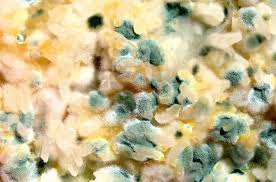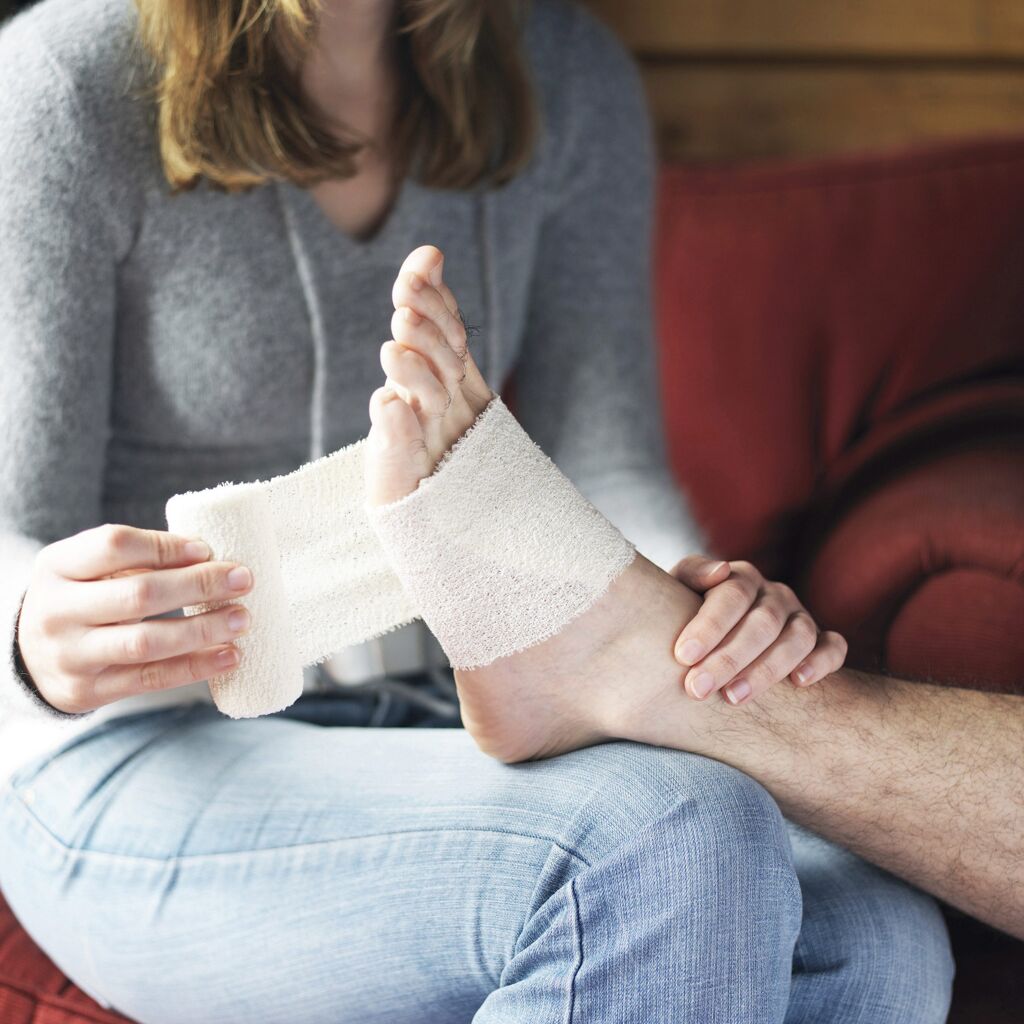Habit Change: Research On How To Improve Bad Habits

Bad Habits:
For this week’s post I’m shifting gears a bit and writing about habit change, which is a difficult feat for many people to accomplish. Habit change is a very important topic for health, and many patients struggle to implement positive changes in their life that benefit their health. After all, knowing what we should do for our health isn’t terribly practical if we’re not able to implement and integrate healthy habits into our lives.
This post will focus on what the science has to say about habit change, and I’ll emphasize practical strategies you can implement to make lasting positive habit changes in your life. If you’ve struggled to change habits in your life, you’re not alone! The existence of common expressions like these speak to the difficulty many people experience when trying to change bad habits:
- Old habits die hard.
- You can’t teach an old dog new tricks.
Fortunately, habit change is possible for everyone, even “old dogs” who have been doing things the same way for decades. This post will relate what the research has to say about the most effective ways to make positive habit changes that are manageable and lasting. Keep reading to learn what the research says about habit change, and to learn practical tips to form healthier habits.
What is a habit?
Let me begin by defining what a “habit” actually is. A habit is not just something we often do, it’s a behavior we do automatically, usually in response to a cue. For example, putting on our seatbelt in the car is a habit most of us perform without thinking. Have you ever gotten in the car just to move it a few feet and thought, “I don’t need to put on my seatbelt for this,” only to snap the seatbelt on as soon as you start the car? Although it may be annoying, putting on your seatbelt whenever you get in the car is a great habit to have, as it can save your life.
This is an example of a habit in action. It’s not just a thing you do often, it’s something you do in response to a cue. In this example, the cue is getting in the car and starting the engine. And in this distinction lies a major clue to successful habit change: To change habits, we must reprogram our automatic responses to cues.
Two important points to remember about habits are:
- Habits are automatic and we often perform them without thinking
- Habits are usually responses to cues
Here’s another example: Have you ever been in a situation when you moved to a new home, yet upon leaving work at the end of the day you began driving towards your old home without thinking? Perhaps you even had been talking about your great new place with a coworker just before leaving, and yet the habit kicked in and you drove straight to your old house! In this situation, the cue was leaving work and getting in your car, and the automatic habitual response was to get on the road heading to your old home. It can take several days, or even a week or two to get the new habit in place and head in the right direction to your new home.
To Read About Blog Topic, Scroll Down
Want To Work With Our Clinic?
Do you have a chronic or mystery illness that no one has been able to help you with? Are you simply wanting to re-connect with a healthier version of yourself? It’s Time To Finally Feel Better!
The purpose of habits
It’s important to note that habits are not just annoying behaviors that keep you locked into certain routines. Habits serve important functions in our lives. One main function of habits is that they automate routine functions so that you can multitask. Although it’s annoying to drive to your old house after moving, as in the last example, automating your drive home frees you up to think about other things while you drive. Without the power of habit, you would have to devote 100% of your attention to driving. You couldn’t talk to a passenger, enjoy music on the radio, or think about what you’re going to make for dinner while driving.
If you’ll pardon another driving example, learning to drive is basically the process of forming many habits in response to cues. When traffic slows down in front of you, you ease off the gas and apply the brake. If someone in the lane next to you swerves into your lane, you slam on the brakes and honk your horn. If the road curves, you slow down and turn the steering wheel. After you become an experienced driver, these responses all become automatic.
But when you first start driving they take tremendous concentration. You can’t carry on a conversation with a passenger because keeping your car in your lane and avoiding an accident take your full concentration. But after some practice, these behaviors become automatic and habitual. In this blog I’ll focus on how to harness the power of habits to establish health habits in response to cues, so keep reading to learn how!
Habits fill important functions
In addition to being automatic and mindless, habits also feel safe (even the bad habits!). They are predictable and help to reduce stress. One study on students at Texas A&M University found that students felt less stressed when performing habitual tasks, and when they switched to non-habitual tasks their stress levels increased (1). This is part of the reason why changing habits tends to be so stressful. Performing non-habitual behavior and changing habits take us out of our comfort zone and increase stress levels, as well as emotional response. The familiar is comfortable, low-stress, and easy. It requires no thought. In fact, students in this study reported more strong emotions overall when performing non-habitual tasks. In addition to strong emotions like stress, another emotion commonly reported was fatigue.
Speaking of fatigue, habits also protect us from what’s known as “decision fatigue.” When we make decisions all day long, our mental capacity and ability to make good decisions diminish. One interesting example of this in the research is a study which looked at the decisions made by judges in court. They found that judges were significantly more likely to grant parole earlier in the day and after taking a break, and much less likely to grant parole in cases that took place after the judge had already been hearing cases for several hours. Researchers established a clear pattern and found that favorable rulings issues by judges gradually declined from about 65% at the beginning of a shift to nearly zero over several hours. This phenomenon repeats itself after each break the judges took: After lunch, favorable rulings returned to about 65% and fell to close to zero again by the end of the afternoon (2).
How long does it take to change a bad habit?
Now that we know some of the purposes habits fill, let’s move on to how long habits take to change. There is an often-quoted statistic that it takes 21 days to change a habit. We’re told to just stick with something for three weeks and we’ll be well on our way to positive change. Unfortunately, this number doesn’t appear to be based on any concrete data and the length of time it takes to change a habit varies significantly depending on the individual and the habit a person is trying to modify.
The 21 day rule of thumb may have come from a book called Psycho-Cybernetics published in 1960 by surgeon Dr. Maxwell Maltz, who observed that surgical patients took an average of 21 days to adjust to the loss of an amputated limb. Based on this finding, he suggested that 21 days is a reasonable length of time for people to adjust to changes in their life. Of course, an amputated limb is really not relevant to habit change, and it’s disputed whether this is where the 21 day urban legend really comes from.
Whatever the true origin of the 21 day advice, newer research has found that the length of time it takes for a new habit to become automatic varies considerably. One study found that participants took between 18 and 254 days for a new habit to become automatic, which needless to say is quite a wide range. The level of difficulty of the new habit that participants were trying to implement was a primary determining factor in the length of time required to make change. For example, participants with a fairly easy goal of drinking an extra glass of water after breakfast were able to automate that habit in just a few weeks, after an average of about 18 days. In contrast, more difficult or complex habit change like going to the gym took up to 254 days.
The average length of time for habits to become automatic in this study was 66 days, leading the researchers to suggest that on average, 8-10 weeks is a reasonable length of time for new habits to become automatic and integrated into one’s life. It’s important to keep in mind that because there was such a wide range that this average probably needs to be adjusted depending on how difficult and complex the new habit is. The researchers also note that simple and easily achievable goals are much more likely to become automatic than large, lofty goals. They warn that a reason many New Years resolutions fail is because they are too grandiose. Instead, they recommend making small goals that are fairly easy to obtain and focusing on one small, specific habit change at a time (3).
Progress, not perfection
The study on bad habit change in the last section also noted that a habit does not have to be performed with 100% compliance for it to stick. Researchers observed that although early success was important, missing an opportunity to perform the new habit here and there did not significantly impede formation of the new habit. Previous research had assumed that habit formation was linear, and that automaticity was determined by the number of previous repetitions. This study suggests that instead of being linear, habits become automatic after a certain number of repetitions. It also posits that early repetitions result in larger increases as the mental connection between the cue and the resulting behavior are established.
You can’t build a habit around *not* doing something
If you’re hoping to stop a bad habit, it’s important to remember that you will have better results if you build a new habit to replace the bad one, rather than simply attempting to stop an undesirable behavior. Because habits are behaviors in response to a cue, it’s far more effective to build a new habit in response to a cue than to simply try not to do something. As one study notes, “it is not possible to form a habit for not doing something” (4). For example, if your goal is to stop eating candy in the afternoon you are probably better off substituting a new snack or behavior for the candy than to simply trying to stop eating candy. In other words, work on building a habit around eating a healthy afternoon snack or perhaps an activity like going for a short walk to replace the afternoon candy, rather than trying to simply stop eating the candy. Putting emphasis on building a new, healthier habit will result in a new automated behavior that will become easier to stick with over time as it becomes automatic, as opposed to an act of self-deprivation that relies on ongoing will power, which will inevitably wane over time.
Importance of cues for bad habit change
As I stated previously, habits are behaviors that we perform in response to cues. It’s important to have a clear cue that prompts you to perform the action that you want to become habitual. This is a challenge that we see in patients who we want to take supplements in between meals and on an empty stomach. In many cases, people often take supplements with meals, and in this example the meal itself is the cue to take the pills. In cases of taking pills on an empty stomach, it can be very difficult to remember to take pills two hours after a meal as that is not a concrete event. One workaround for this is to find another event that happens at the time you need to take your supplements and use that as your cue. For example, if you have an office meeting at 11am each day, use that meeting as the cue to take your supplements. It’s important to identify what will be a good cue to which you can tie the new habit you with to automate. In addition to finding good cues to which you can tie your new habit, building awareness is another important component of successful habit change.
Importance of awareness for bad habit change
Because habits are automatic responses that happen without thinking, increasing awareness is an important first step in habit change. To change your habitual response, bring awareness to the thing that you’re doing without thinking. This can be a difficult step, as it may involve first coming to terms with how often you really do an undesirable habit that you’re trying to break. Let’s say your goal is to cut down on the amount of soda you drink, and drinking soda is something you do much of the day without thinking. Before you can set a goal for yourself of, say, drinking one less soda per day, you must first know how many sodas you drink each day. Let’s say that you think you drink three or four sodas per day, but upon increasing your awareness you discover it’s really more like six or eight. How depressing!
It’s said that ignorance is bliss, and there is certainly truth to that expression. Sometimes we intentionally remain ignorant because we’re afraid of knowing the truth. It’s important to remain patient with yourself in these situations. Concentrate on observing your behaviors without judgement, as you would with a loved one. If someone close to you was struggling with a habit they wanted to change, how would you react to their struggle? Would you reinforce their self-reproach or offer them compassion, support and encouragement? Try to extend that loving acceptance to yourself.
Building awareness is a huge component of successful habit change. Participants in the Texas A&M study I mentioned in the last section were less likely to think about their behavior when performing habits than when performing nonhabits. Mindfulness practices are a great way to build awareness. In the next section I’ll give some practical tips on how to increase mindfulness and awareness.
Mindfulness practices for bad habit change
One good awareness practice is to simply take a moment to check in with yourself. Initially, it’s more important to increase that awareness than to actually change the behavior itself. Even if you still drink the soda, for example, work on acting with intention. A good first step is to create some space between the initial impulse to perform the action you are trying to change and doing the action itself. After all, you can still drink the soda even if you take 60 seconds to stop and check in first.
During that 60 seconds, ask yourself questions like, “Do I really want this soda?” and “Why am I craving soda?” Ask yourself, “What am I feeling and what do I hope to get from drinking the soda?” Another good question is “Is there anything else that might fulfill this desire?” See what answers you come up with and what other questions arise. Try to observe your thoughts, feelings and desires without judgement. Simply see what you can observe.
You may find that concentrating more initially on these questions and creating space and acceptance for yourself your choices may lead to increased understanding that makes habit change easier. As you become aware of the thoughts and feelings taking place behind the scenes, your solutions to creating habit change will come. It is often these unidentified thoughts that are driving undesirable behaviors, and identifying them will give you clues on how to cultivate different habitual responses to cues.
Break goals into smaller pieces
Often times, the bad habits we try to change are complex and have multiple components. Research has shown that people are more successful at changing smaller, specific habits with clear goals than large, multifaceted goals. Try breaking your habits down into smaller pieces and work on one at a time. Create clear goals for yourself and give yourself time to integrate them into your life before moving on to the next piece.
For example, if your goal is to go to the gym once a week, break that goal down into smaller components. Going to the gym involves multiple pieces. If you don’t already have a gym membership, the first step is to pick one and sign up. After that, there is picking a time to go, choosing which exercises to do, hiring a personal trainer if necessary, and showering afterwards. If you don’t already have workout clothes, buying some is another piece. It’s easy to see from this example that what appears to be a single goal can actually involve many pieces.
One way to break a complex task into smaller pieces is to implement one piece at a time. Using the gym example, start by picking a cue and building the habitual response. If you’re going to go after work, begin by driving to the gym after work and just checking in. Maybe you stretch a little, or maybe you just turn around and leave. Either way, you begin to associate the cue (leaving work) with your habit (going to the gym). You don’t have to shower or wash your gym clothes, so it’s a pretty manageable habit to implement.
After you’ve established that initial habit, say after a week or so, start adding to your habit. You could start showering when you get home or washing your gym clothes. Next you can add some exercise, whether it’s weights or time on the elliptical or stationary bike. It takes longer to implement a habit change this way, and it may feel kind of silly to go to the gym and not work out. But by implementing habit change in pieces and building connections between cues and responses you build habitual responses that are automatic and don’t require much willpower to continue. Next I’ll talk about another important tool for habit change, visual cues.
Visual cues for bad habit change
Using visible cues to remind you of your goal can be helpful for habit change. One study on people who wanted to stop biting their nails found that the use of a non-removable visual cue like a wristband was an effective way to create desirable habit change by reminding the participants of their goal (5). A visual cue can help create space between the desire to perform an undesirable habit and performing the habit itself. Other examples of helpful visual cues are reminders on your phone or sticky notes on the wall. If you use sticky notes, try to move them around, use different colors, or somehow create variety in the presentation of the reminder, as the brain will quickly become habituated to seeing the reminder and tune it out.
In summary
Habit change can be challenging, but there are many tools at your disposal to help. In this blog I’ve presented what the research has to say about how habits are formed, as well as a number of tips that can help make lasting change possible. Let’s review them here:
Important points to remember about habits:
- Habits are behaviors that we perform automatically in response to a cue
- You can’t build a habit around not doing something
- Instead, build new healthy habits to replace undesirable habits
- Habitual behaviors fulfill important roles in our lives
- Reduce stress
- Automate repetitive tasks
- Protect us from decision fatigue
- Habits thrive in unaware states
- Building awareness is an important first step
- Coming to terms with reality can sometimes be painful
Advice to change bad habits into good ones:
- Break new habits into small, attainable goals
- Give yourself time to implement them successfully
- It can take the better part of a year to automate some habit changes
- Create early success
- Habits don’t have to be performed 100% of the time
- But early success is important
- Give yourself small victories to be proud of
- Be patient with yourself
- Habits can take two months or longer to automate
- Give yourself time to integrate them into your life before moving on
- Increase awareness
- Utilize mindfulness practices
- Create space between the desire to perform an undesirable habit and doing the habit itself
- Observe thoughts and desires without judgement
- Investigate the thoughts behind cravings and desires
- These will give clues about how to create healthy habits
- Replace undesirable habits with new healthy habits
- Use visual cues
- These help remind you of your goals
- Keep the cues fresh and changing so they don’t disappear into background noise
By understanding the roles habits play in our lives and using these tips, you can create lasting habit change in your life. The beauty of this type of habit changes is that it creates healthy habits that are automatic and do not require ongoing effort to maintain. By automating positive habits in response to cues you can create lasting change that is self-sustaining!
Want help with your health? Book a free health evaluation call to see if you are a good fit for our clinic by clicking the button on the left below. If you are a clinician interested in advancing your training, please check out our online worldwide functional medicine training institute by clicking the button on the right below.
Book My Free Phone Health Evaluation Functional Medicine Certification for Clinicians
References
- Wood, Wendy, et al. “Habits in Everyday Life: Thought, Emotion, and Action.” Journal of Personality and Social Psychology, vol. 83, no. 6, 2002, pp. 1281–1297., doi:10.1037//0022-3514.83.6.1281.
- Danziger, S., et al. “Extraneous Factors in Judicial Decisions.” Proceedings of the National Academy of Sciences, vol. 108, no. 17, Nov. 2011, pp. 6889–6892., doi:10.1073/pnas.1018033108.
- Lally, P., van Jaarsveld, C. H. M., Potts, H. W. W. and Wardle, J. (2010), How are habits formed: Modelling habit formation in the real world. Eur. J. Soc. Psychol., 40: 998–1009. doi:10.1002/ejsp.674.
- Gardner B, Lally P, Wardle J. Making health habitual: the psychology of “habit-formation” and general practice. The British Journal of General Practice. 2012;62(605):664-666. doi:10.3399/bjgp12X659466.
- Koritzky, Gilly, and Eldad Yechiam. “On the Value of Nonremovable Reminders for Behavior Modification.” Behavior Modification, vol. 35, no. 6, 2011, pp. 511–530., doi:10.1177/0145445511414869.
Are You Suffering From A Chronic Illness?
Does your current health situation look like this…
- Do you feel that you have tried many things and either nothing works, or the treatment does not hold?
- Have you been told that there is nothing that can be done to reverse your illness and you just need to manage symptoms?
- Does your illness impact your work, your family, your happiness and your social life?
We specialize in finding answers and solutions for complicated chronic illness when people feel like they have tried everything. If this sounds like you, book a free call with us to see if we are the right fit for your health goals.
Dr. Miles has spoken for the following organizations:


















Thanks Aaron for this thorough article on changing our habits. It can seem a bit overwhelming to change our ingrained habits. I appreciate the thoughtfulness and detail you go into here. It is affirming and refreshing. Thank you!